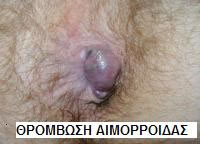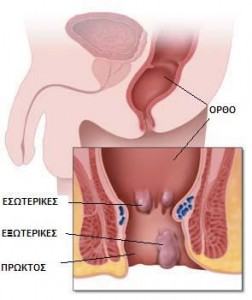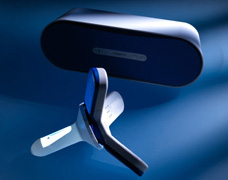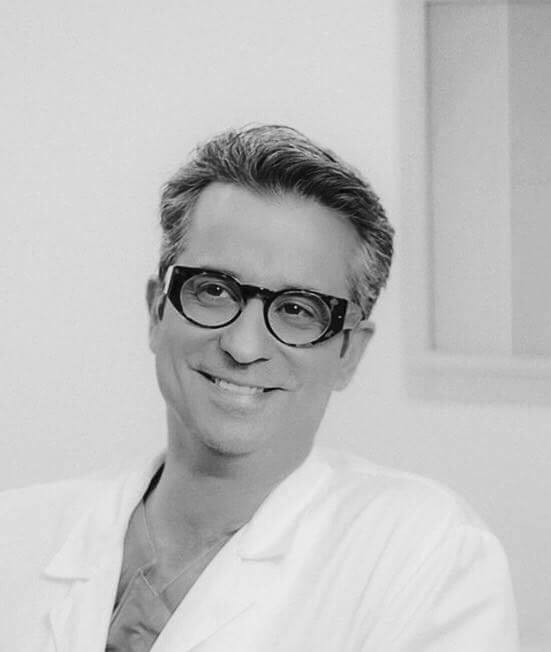Contact the Surgeon:
Haemorrhoid disease, namely haemorrhoids, also known as “piles”, is one of the most common diseases that can significantly affect the quality of everyday life and the well-being of patients suffering from them.
"Although haemorrhoid surgery has been accused of being very painful for the patient, a careful application of new methods by specialised surgeons offers excellent and permanent treatment results, enabling the patients return to their daily life quickly and, most importantly, without the torturous piles.
Following Germany and the USA, the first and only, in Greece, wireless ultrasound TRILOGY device has been installed in the Surgery Clinic of the Athens Medical Group (Peristeri branch), of which I am the Director."
Epidemiologically it is worldwide spread. One out of five, or according to other researchers, one out of three persons of the worldwide population will experience discomfort because of this ailment at some point in their life. The disease has been known since ancient times and it is reported by ancient Egyptians, Greeks and Romans.
Since it affects a part of the human body, about which most people feel uncomfortable to talk or seriously care about, patients suffering from haemorrhoids go to the doctor too late, after experiencing advanced discomfort, without a proper diagnosis and sometimes with insufficient treatment. Moreover, not every kind of discomfort in the anal area should be attributed to “haemorrhoids”.
Other very frequent in the general population diseases, such as anal fissures, perianal fistulae, abscesses and many more, may appear in a similar way or even co-exist with haemorrhoids. Incorrect patient evaluation, but also failed diagnosis, which is unfortunately sometimes provided by non-specialized doctors, result in symptoms persistence, after the patient undergoes an operation for haemorrhoids.
Haemorrhoids should be diagnosed by a specialized doctor, and not the patients themselves or their acquaintances. Only then can haemorrhoids treatment be effective and patients can free themselves from this chronic ailment.
It is a fact that all people have haemorrhoids as part of their normal rectal anatomy.
They are basically blood vessels, small veins and arteries, in other words small “tubes”, which carry blood to the anal area.
They form a vessels complex, which is called “rectal venous (haemorrhoidal) plexus”. Furthermore, during defecation they act as protective cushions of the anal sphincter, which holds the faeces inside the last part of the intestine and also allows their passage during defecation.
The rectum is the last part of the large intestine just above the anus and acts as a storage site for faeces, before these are discarded from the human body through defecation. During the defecation process, the anal sphincter relaxes and faeces can then exit the rectum. The rectal venous plexus is normally full of blood.
During defecation, when the sphincter relaxes, blood leaves the plexus and returns again after this process is completed. Thus haemorrhoids, to a certain extent, help the anal sphincter to occlude the anus and contribute to faecal continence.
The problem begins when haemorrhoids get larger, bigger and they swell, and the tissues that hold them in place relax. When this happens, then haemorrhoids are considered as affected by a disease, namely the haemorrhoid disease.

Thrombosed haemorrhoid
There are many causes thought to be responsible. Constipation is the main one. In societies with the so-called “western” lifestyle, factors such as an irregular diet, meat consumption, the sedentary lifestyle, reduced exercise and daily stress, contribute to increased constipation, which leads to haemorrhoid disease in persons with the predisposition for it.
Diet is an extremely important factor. Haemorrhoid disease is rare in Africa. However, when African people migrate to the USA and eat like Americans do, the frequency of haemorrhoids increases among them as well.
Other conditions, which can result to increased chances for haemorrhoids, include pregnancy, advanced age, intense coughing like that with people with bronchitis (for example, chronic smokers), frequent lifting of heavy objects in some professions, the habit of spending a lot of time sitting on the toilet, and even hereditary predisposition.
Overall, chronic constipation, intense effort during defecation and defecation of long duration are the most severe aggravating factors. Haemorrhoid disease is most frequent between the ages of 40 and 50. Women actually develop haemorrhoids more rarely in comparison to men.
• Pain in the anal ring area
• Bleeding
• Mucus secretion
• Local irritation
• Itching
• Asymptomatic or painful swelling
• Feeling of incomplete defecation
• Any kind of discomfort in the anal area should be immediately evaluated by a specialized doctor.
The doctor should evaluate the symptoms, and exclude other diseases that cause similar symptoms to those of haemorrhoids, such as anal fissures, perianal fistulae and abscesses. In fact, the doctor must pay special attention to adults over 50 years old, since traces of blood in the faeces may mean underlying colon cancer (the second most frequent type of cancer type in the world).
Haemorrhoid treatment is personalized, based on the stage of the disease’s development. Except for the symptomatic and bleeding haemorrhoids, the Trilogy ultrasound method is indicated for all four haemorrhoid grades that cause problems. The method is bloodless, painless and it is completed within approximately 30 minutes. The patient can return home the same day.
After the examination, the specialized surgeon determines if the method can be applied to the patient, similarly to all surgery methods and techniques.
Haemorrhoids are classified into four grades:
• 1st grade haemorrhoids are not visible from outside the anus and can only be seen with a proctoscope during examination
• 2nd grade haemorrhoids prolapse within the anus
• 3rd grade haemorrhoids protrude outside the anus, and patients can push them back inside with their finger and
• 4th grade haemorrhoids protrude outside the anus and are not easily pushed back inside.
Treatment of haemorrhoids for the first two grades is conservative.
The most important part is fighting constipation. The two simplest and necessary ways to do this is to increase the fibre and water intake through the patient’s diet.
The American Society of Colon and Rectal Surgeons advises to drink 6-8 glasses of water and consume at least 30 grams of fibre per day. This is not always possible. Just think that one apple has only 3 grams of fibre, and one tomato only 2 grams. Nevertheless, fruit and vegetables are the main fibre source.
Cereal consumption is rendered thus necessary: one bowl of All Bran cereal contains 27 grams of fibre. There are various special lists showing the amount of fibre contained in various kinds of food, that people can find through their specialized doctor or in pharmacies. Reading magazines and spending much time sitting on the toilet are not very good habits.
Haemorrhoid disease is very frequent in both sexes, and causes discomfort, itching and often bleeding. Although it affects at least half of the global population up until the age of 50, there are still many misconceptions about it.
There are many people who believe that haemorrhoids are caused by everyday habits, such as consuming spicy food, sitting on cold benches or anal sex. However, haemorrhoids appear for much more complicated reasons and it is good to know the truth about them.
General Surgeon Dr. Anastasios Xiarchos, the Head of the Surgery Department in Athens Medical Group – Peristeri branch, and President of the Scientific Association of Anorectal Surgery (www.axiarchos.gr), mentions that “Knowledge can protect us, but also liberate us from misconceptions which prevent us from enjoying what we really desire,” and he helps us finally learn the myths about haemorrhoids.
1st Myth: Haemorrhoids can lead to colon cancer
Although haemorrhoids are harmless in most cases, they may evolve into a serious problem, which is not cancer though. These are two completely different diseases: haemorrhoids are swollen veins, while cancer is caused by an abnormal division and mutation of cells. However, this does not mean that haemorrhoids should be treated lightly, as some cancer patients are susceptible to them (because of pressure exerted by the tumour), but also because some haemorrhoid symptoms are the same as in colon cancer. Therefore, we should always seek medical advice in order to exclude more serious conditions.
2nd Myth: Spicy food causes haemorrhoids
Too much pepper, oriental food with many spices and spicy food in general may cause problems to the digestive system, because the stomach’s balance is disrupted. However, they cannot directly cause haemorrhoids, because the veins in the rectum are not affected by them. Spicy food can be accused of causing irritation and itching in the anal area, and frequently constipation, which is the main cause of haemorrhoids.
3rd Myth: Fibre consumption eliminates the development of haemorrhoids
Although the consumption of fibre is an important factor for the prevention of haemorrhoids, it is neither enough, nor the only one. In other words, fruit and vegetables do not make us immune to haemorrhoids. They just reduce the possibility of haemorrhoid formation or, more correctly, they delay the development of the disease.
Factors such as a sedentary lifestyle and a prolonged sitting on the toilet play an important role in the formation and development of haemorrhoids. Preventive action is the best course of action for those worrying about developing haemorrhoids. Drink at least 8 glasses of water per day, follow a high-fibre diet (and if this is not possible, take fibre supplements) and exercise daily.
4th Myth: Haemorrhoids can be caused by anal sex
Anal sex is not the main cause of haemorrhoids. Although anal penetration can aggravate haemorrhoids, there are no studies providing sufficient evidence that anal sex can cause haemorrhoids, when certain rules of good practice are followed.
5th Myth: Sitting on a cold surface may cause haemorrhoids
This is a funny myth, but is mainly believed by people of oriental origin. Retaining a sedentary position for a prolonged period may cause haemorrhoids due to the pressure applied to the rectum. However, under no circumstances is sitting on a bench a cause of haemorrhoids development.
6th Myth: Haemorrhoids are a disease of old people
This is true to some extent. The elderly are more likely to suffer from haemorrhoids, due to the weakening of anal walls as age advances. This doesn’t mean though that younger people can avoid haemorrhoids, since any person can develop piles at any age. Other risk factors besides ageing include pregnancy and chronic constipation.
7th Myth: Haemorrhoids are permanent and cannot be cured
Haemorrhoids are a disease characterized by recrudescence and, similarly to most health problems, they are not necessarily permanent and can be cured in any case. Haemorrhoids are swollen veins which can change, especially if their cause is temporary, such as childbirth, for example. There are several curing methods for haemorrhoids, and those can be applied at home, in outpatient clinics or in operating rooms.
According to Dr. Anastasios Xiarchos’ advice, “All treatment methods are rather simple and painless. Thanks to modern surgery techniques the annoying problem of haemorrhoids can be permanently solved within a short time. Permanent results depend on the good function of the intestine, which requires a high-fibre diet, sufficient hydration and exercise.”
If you don’t have a bowel movement for more than two days or it takes more than 5 minutes for faeces to pass, then medical advice is necessary. It is important to not use laxatives, which are irritating and should only be prescribed in very special cases. Local use of anal ointments can help, but only temporarily! Over-use can lead to rectal skin atrophy due to the cortisone often contained in such medications. Furthermore, it can lead to dangerous types of perianal dermatitis, which may be more torturous and difficult to cure than haemorrhoids.
If despite the above measures the haemorrhoids persist, are very swollen and cannot be pushed back inside or especially if they are constantly bleeding, then some type of surgical treatment is required.
inside or especially if they are constantly bleeding, then some type of surgical treatment is required.
Anal dilatation by insertion of 6-8 fingers of the surgeon, while the patient is anaesthetized, was one of the oldest methods ever applied (Lord’s procedure). This method has been deemed unsuitable and dangerous by most expert surgeons of the anorectal tract, due to the serious risk of incontinence and the frequent recrudescence of haemorrhoids.
There is a multitude of surgery techniques that have been applied and which have contributed to the surgical solution of the haemorrhoid problem. To name a few, we can mention sclerotherapy, rubber band ligation (Baron procedure), photocoagulation, the “open” haemorrhoidectomy (Milligan – Morgan procedure) of the British school, the “closed” haemorrhoidectomy (Ferguson procedure) of the American school, and the use of a surgical stapler (Longo procedure). The real possibility of recrudescence, the failure and complication rates (even if they are low), the, frequently severe, post-operative pain, which is also the main reason of delay and discouragement in seeking surgical help for scared patients, and a more complete understanding of the aetiopathogenesis attributed to haemorrhoids by modern surgeons, have all led to the development of modern, less mutilating and more bloodless methods for permanently curing the disease.
The knowledge about the anatomy of haemorrhoid vessels, the direct correlation between blood flow and haemorrhoid lump formation, and the intense technological advances in ultrasounds during the last decades, have all laid the foundation for developing an innovative method:
The Doppler Guided Haemorrhoidal Artery Ligation is a modern, minimally invasive surgical technique for the painless treatment of haemorrhoids.
A specially designed proctoscope locates the haemorrhoidal arteries with the help of a built-in Doppler ultrasound. These arteries are ligated with the use of special sutures, thus stopping blood circulation to that area, consequently stopping the blood flow towards the haemorrhoids, which then atrophy and shrink away. There are no incisions with a scalpel or other cutting tool (e.g. a medical laser) required for the anal skin or mucosa. General anaesthesia is not necessary.
The average operation completion time is approximately half an hour. The patient feels minimum or no pain after the surgery.
Patients can return home the same day and get back to their daily activities the next day. There is no need for special pre- or post-surgical care or medication. Results are immediate, especially for bleeding haemorrhoids.
Apart from symptomatic and bleeding haemorrhoids though, the ultrasound method is indicated for all four haemorrhoid grades that cause problems. This method is already being used in Europe and America, and has provided relief to thousands of patients suffering from haemorrhoids.
The technological development of the new wireless ultrasound device TRILOGY introduces a revolution in haemorrhoid treatment!
The new generation of TRILOGY combines all the proven advantages of the ultrasound method, with the flexibility of wireless technology. This makes it basically the third and most advanced ultrasound generation.
The method cures the three main haemorrhoid symptoms. Bleeding, itching, and pain.
Furthermore, it repairs the external prolapsed haemorrhoids and minimizes pain. In addition, there is no excision or mutilation of the tissues required, and no wounds are formed.
Patients recover quickly and can immediately return to their work and daily activities.
Technological development enables us to proceed with the removal using local anaesthesia, when possible.
According to statistics, more than 200,000 patients worldwide have permanently solved the problem of haemorrhoids after the application of minimally invasive surgeries.
Considering the numerous surgical methods for the treatment of haemorrhoids, safety is a noteworthy factor, since not even one serious complication has ever been recorded after the disease is cured through surgery with ultrasounds.
ABOUT

General Surgeon
Office:
Patriarchou Ioakeim 25, Kolonaki, 10675
Office Tel:
0030 210 7296584
Secretarey Tel: 0030 6938 340 082
24hr Emergency Phone Number: 0030 6983 340 082
info@axiarchos.gr


Anastasios G. Xiarchos is a General Surgeon, the Director of General and Laparoscopic Surgery Clinic of the Medical Center of Athens – Peristeri Clinic and the President of the Scientific Association of Anorectal Surgery.
Learn more about Dr. Anastasios Xiarchos on the page with his
curriculum vitae.

To book an appointment call 0030 210 7296584 or his secretary directly at 0030 69 38340082.
Once you’ve booked your appointment you can visit the Doctor at his office in Kolonaki (Patriarchiou Ioakeim 25) or at the Medical Center of Athens.
In case of a medical emergency, please call the following number: • Office Tel.: 0030 210 7296584
• Secretary Tel.: 0030 69 38340082
24hr Emergency Phone Number:
0030 6938 340 082

Affordable Packages & Contracts with:
• All funds
• All private insurance companies
